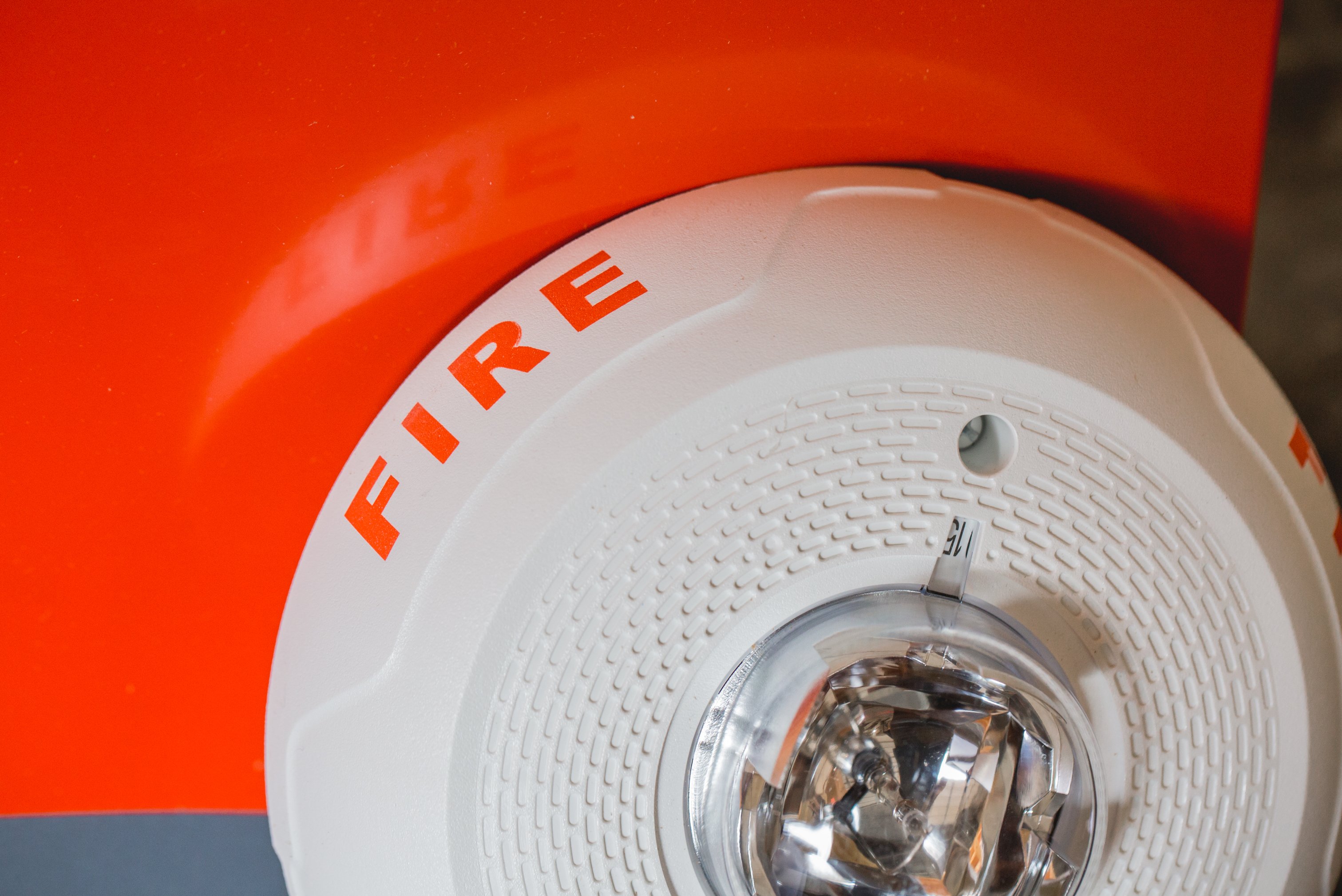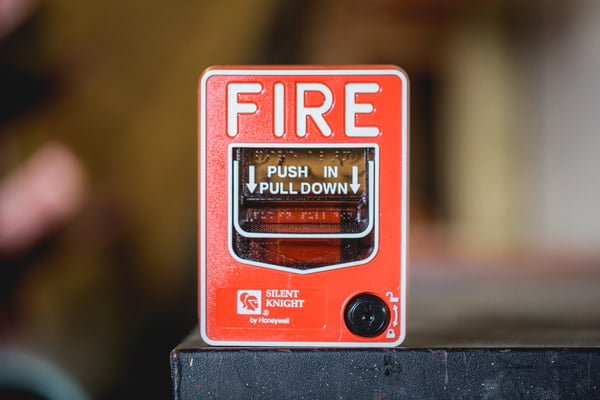What are Fire Alarm Initiating Devices?
Fire alarm initiating devices are devices used to manually or automatically signal a fire alarm system to initiate responses from equipment and people. These devices connect to the fire alarm system’s control panel (FACP) and when triggered, send signals to the FACP to go into the alarm stage, sounding alerts throughout the building and to emergency responders.
Fire alarm systems are highly advanced systems that rely on a network of appliances, devices, and control panels to perform key fire and life safety functions such as detection, alerts, and monitoring. A fire alarm system’s primary purpose is to simultaneously detect and notify building occupants and emergency services of fires from a centralized location.
However, if an organization’s fire alarm initiating devices are malfunctioning, then the entire fire alarm system is without the key triggering device that relays detection signals to the fire alarm control panel (FACP). Without these detection signals, the fire alarm system will be unable to protect the organization’s properties, assets, and employees accordingly.
Businesses should partner with a trusted fire and life safety service provider to ensure all fire alarm initiating devices are properly inspected, maintained, installed, and repaired in order to prevent inadequate fire alarm detection and protection.
The Importance of Fire Alarm Initiating Devices
According to NFPA 72, fire alarm initiating devices are defined as devices used to manually or automatically signal a fire alarm system to initiate responses from equipment and people. These devices connect to the alarm system’s control panel and are under the control panel’s surveillance. When triggered, the control panel identifies the location and then goes into the alarm stage, sounding alerts throughout the building and sending commands to emergency responders.
Fire alarm initiating devices play an integral role in the overall efficacy of a commercial fire alarm system. These devices act as the fire alarm system’s trigger, and without proper functionality, the control panel would be unable to identify the activation and the entire system would fail.
The importance of fire alarm initiating devices can be further illustrated by picturing a fully operational interconnected fire and life safety system as a streamlined workflow. The fire alarm is the first system in this interconnected workflow, and once activated, the next step in the fire and life safety workflow is triggered such as an extinguishing system like automatic sprinklers. Without fully operational fire alarm initiating devices, this entire workflow collapses in on itself as response signals will not be generated and fires will go undetected.
Types of Fire Alarm Initiating Devices
Fire alarm initiating devices are generally categorized into two different variations: automatic and manual. Before discussing fire alarm initiating device types, organizations need to understand the difference between addressable and non-addressable devices. Fire alarm initiating devices can be either addressable or non-addressable.
Addressable - Each individual device comes with a separate address allowing the control panel to monitor their status and location. For example, a building owner can look at the alarm panel display to view the exact location of the fire and the status of fire initiating devices such as “functioning normally,” “in alarm,” or “malfunctioning.” In general, building owners and property managers prefer addressable devices as they provide quick assessment of the situation. Addressable systems are easily scalable due to the low amount of cabling required. Devices installed as part of a larger addressable fire alarm system connect to a singular cabling loop, making it easy to integrate devices to the existing system.
Non-addressable - A non-addressable system is set up in zones with each zone connected to a control panel. Non-addressable systems are typically less expensive and require significantly less labor to install. However, since individual devices do not have an address, fire and life safety technicians will have to physically check each device in a particular zone to find the one in alarm.
Automatic Initiating devices
Automatic fire alarm initiating devices are characterized by their ability to be triggered automatically by the right conditions such as smoke, heat, and water flow. These devices include.
- Heat detectors
- Smoke detectors
- Duct detectors
- Beam detectors
- Tamper switches
- Fire sprinkler water flow switches
Among automatic fire alarm initiating devices are two sub-categories: spot type devices and linear type devices.
Spot Type Devices - These automatic fire alarm initiating devices detect fires solely in the area in which they were installed. Spot type detectors are the cheaper of the two automatic fire alarm initiating devices but require strategic installation to ensure space is adequately protected.
Linear Type Devices - These automatic fire alarm initiating devices operate on a method of detection that spans a wide area of space but communicates to a single control panel.
Manual Initiating Devices
Manual fire alarm initiating devices differ in that these initiating devices must be manually activated by an individual when they witness a fire. Manual initiating devices should be well marked to make the device easy to identify and use.
The most common type of manual fire alarm initiating device is the manual pull station. This device works by manually sending signals to the control panel when someone pulls the handle. While a smoke detector may take several minutes to activate, a manual pull station can be triggered in just a few seconds allowing for quicker fire detection and assessment by emergency responders.
Fortify Your Fire Alarm System with the Right Fire Alarm Initiating Devices
Fire alarm initiating devices play an important role in the overall efficacy of a fire alarm system: activating the system when a fire occurs. Without proper functionality, the entire alarm system will fail and leave the organization's properties, assets, and employees vulnerable to fire hazards.
Organizations that understand the importance of fire alarm initiating devices can partner with a trusted fire and life safety company to ensure they have a proactive fire alarm maintenance program in place that covers end-to-end fire alarm inspection, maintenance, installation, and monitoring. By partnering with experienced NICET-certified fire alarm specialists, organizations can feel confident that their fire alarm equipment - including fire alarm initiating devices - are maintained and code compliant.










